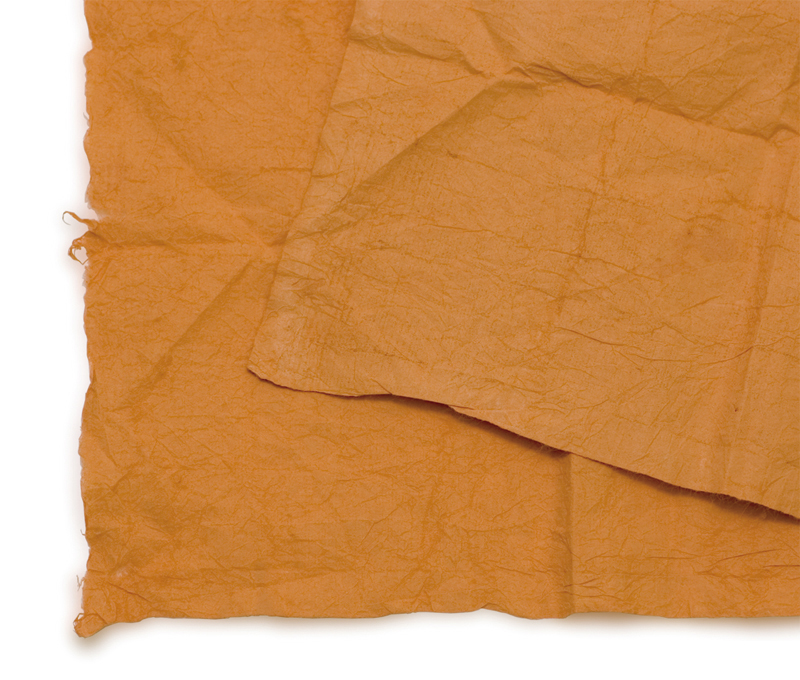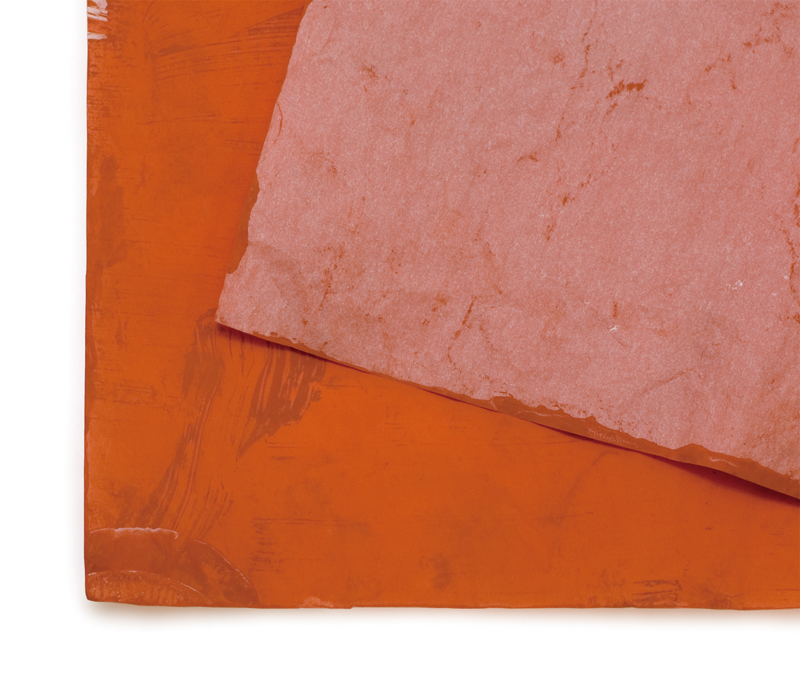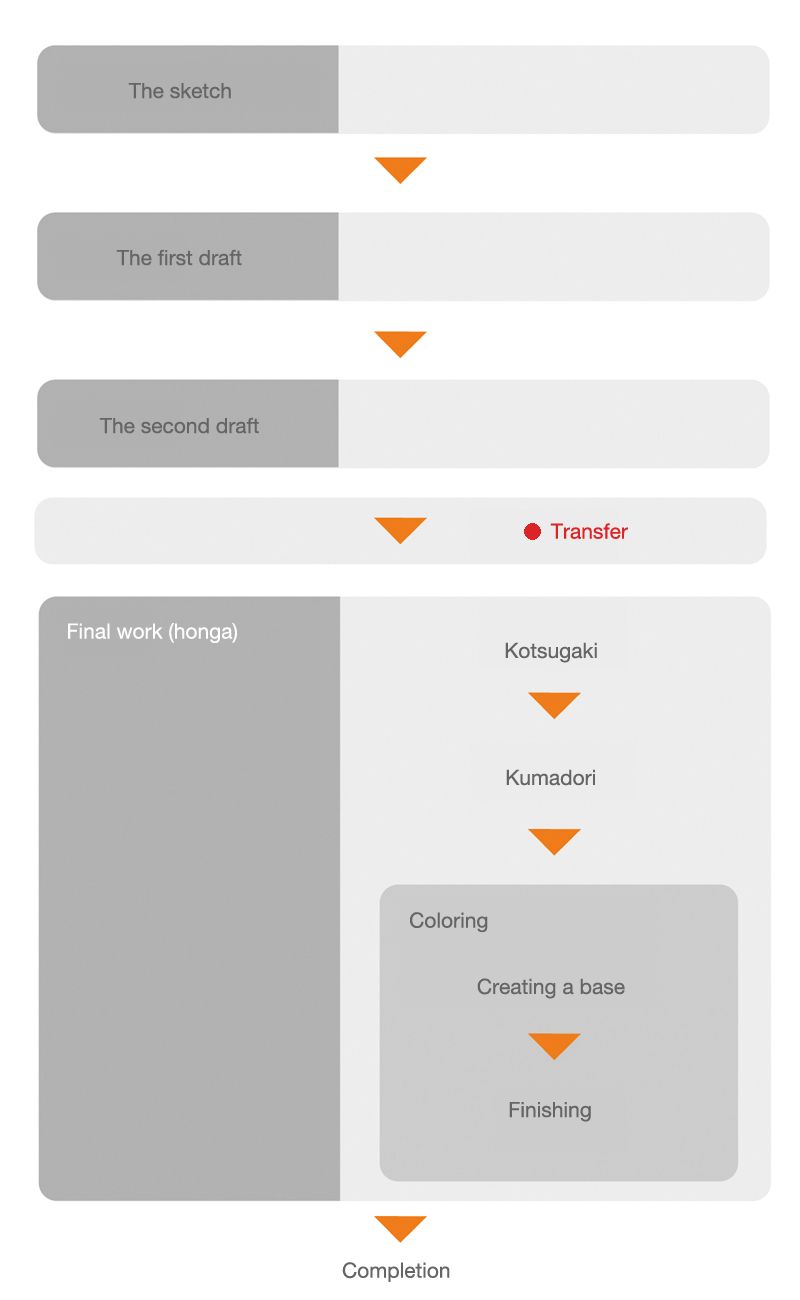Nenshi
念紙
Nenshi
Nenshi is a piece of paper coated with mud pigment or charcoal powder, etc. used in Japanese painting to transfer a rough sketch to the final work. It is also used in lithography to copy a design from the matte film to the plate.
Japanese painting production involves a process of transferring the broad outline to the final work because the materials used do not allow corrections to be made so easily. With thin washi paper, silk and other transparent base materials, a technique known as suki-utsushi is used in which the paper etc. is placed over the rough sketch so that the design is visible from underneath to be copied. Conversely, when working with thicker washi paper, boards and other non-transparent base materials or when producing a mural painting, the design is transferred using nenshi. It is known that nenshi was used in the mural painting in the Kondo Hall in Horyuji Temple. The nenshi used in Japanese painting is made by loosely affixing pigment mixed with Japanese sake and water to a piece of washi paper. Thin washi paper, such as thin Mino paper, that has not been sized (treated with a mixture of animal glue and alum called to prevent ink from running), is used for this purpose. Japanese sake is added to the mixture because it has a weak adhesive property and comes off easily when rubbed. The suitable colorants are fine-powder mud pigments such as red clay, ocher and chalk, as well as charcoal powder. Red clay, in particular, is used extensively as it is easy visible over any base color. When using a nenshi, first of all, the broad outline is traced with a pencil using tracing paper. Mino paper and other thin washi paper were originally used for this process, but it is now common to use western tracing paper so as not to waste valuable resources. The traced design is then transferred to the final work using the nenshi. By applying pressure on the nenshi using a pointed instrument such as a bamboo pen or a stylus, and tracing the lines, the pigment comes off and adheres to the final work. Once a nenshi is made, it can be used repeatedly.
Simple nenshi for lithography can be produced by mixing red iron oxide pigment with fuel alcohol, and applying the mixture on a tracing paper with a brush or cotton wool. The reason for using red iron oxide is that it disappears during the process of making the plate.
After use, nenshi should be stored in a plastic bag or a box so that it does not cause soiling. Carbon paper works in a similar way to nenshi. However, it is not suitable for Japanese painting and lithography as it contains oil and wax. Chaco paper (dressmaker’s transfer paper) is also available as an alternative for nenshi.
 Japanese painting: Red clay
Japanese painting: Red clay Printmaking: Red iron oxide transfer paper
Printmaking: Red iron oxide transfer paper Chaco paper
Chaco paper- The process of making a Japanese painting

